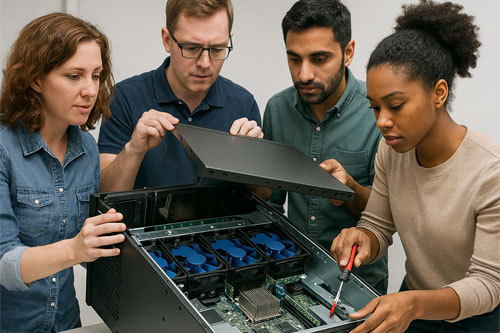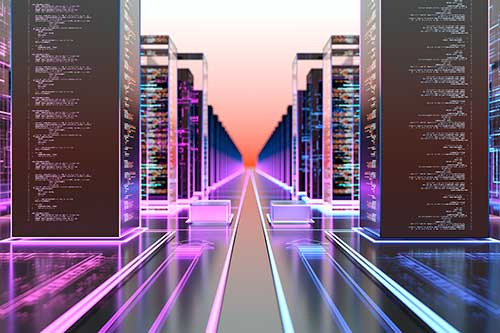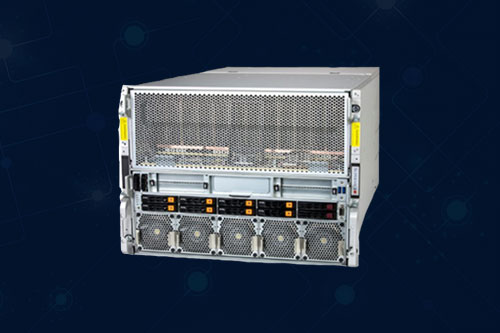Supermicro servers powered by the latest AMD Instinct GPUs and supported by the AMD ROCm open software ecosystem are at the heart of a global cloud infrastructure program offered by Vultr.
Vultr calls itself a modern hyperscaler, meaning it provides cloud solutions for organizations facing complex AI and HPC workloads, high operational costs, vendor lock-in, and the need for rapid insights.
Launched in 2014, Vultr today offers services from 32 data centers worldwide, which it says can reach 90% of the world’s population in under 40 milliseconds. Vultr’s services include cloud instances, dedicated servers, cloud GPUs, and managed services for database, cloud storage and networking.
Vultr’s customers enjoy benefits that include costs 30% to 50% lower than those of the hyperscalers and 20% to 30% lower than those of other independent cloud providers. These customers—there are over 220,000 of them worldwide—also enjoy Vultr’s full native AI stack of compute, storage and networking.
Vultr is the flagship product of The Constant Co., based in West Palm Beach, Fla. The company was founded by David Aninowsky, an entrepreneur who also started GameServers.com and served as its CEO for 18 years.
Now Vultr counts among its partners AMD, which joined the Vultr Cloud Alliance, a partner program, just a year ago. In addition, AMD’s venture group co-led a funding round this past December that brought Vultr $333 million.
Expanded Data Center
Vultr is now expanding its relationship with Supermicro, in part because that company is first to market with the latest AMD Instinct GPUs. Vultr is now offering Supermcro systems powered by AMD Instinct MI355X, MI325X and MI300X GPUs. And as part of the partnership, Supermicro engineers work on-site with Vultr technicians.
Vultr is also relying on Supermicro for scaling. That’s a challenge for large AI implementations, as these configurations require deep expertise for both integration and operations.
Among Vultr’s offerings from Supermicro is a 4U liquid-cooled server (model AS -4126GS-NMR-LCC) with dual AMD EPYC 9005/9004 processors and up to eight AMD GPUs—the user’s choice of either MI325X or MI355X.
Another benefit of the new arrangement is access to AMD’s ROCm open source software environment, which will be made available within Vultr’s composable cloud infrastructure. This AMD-Vultr combo gives users access to thousands of open source, pre-trained AI models & frameworks.
Rockin’ with ROCm
AMD’s latest update to the software is ROCm 7, introduced in July and now live and ready to use. Version 7 offers advancements that include big performance gains, advanced features for scaling AI, and enterprise-ready AI tools.
One big benefit of AMD ROCm is that its open software ecosystem eliminates vendor lock-in. And when integrated with Vultr, ROCm supports AI frameworks that include PyTorch and TensorFlow, enabling flexible, rapid innovation. Further, ROCm future-proofs AI solutions by ensuring compatibility across hardware, promoting adaptability and scalability.
AMD’s roadmap is another attraction for Vultr. AMD products on tap for 2026 include the Instinct 400 family (codename Helios), new EPYC CPUs (Venice) and an 800-Gbit NIC (Vulcano).
Conversely, Vultr is a big business for AMD. Late last year, a tech blog reported that Vultr’s first shipment of AMD Instinct MI300X GPUs numbered “in the thousands.”
Do More:
- Watch the on-demand webinar: How Vultr created an AI cloud with Supermicro & AMD
- Read the solution brief: Vultr offers a global cloud infrastructure program through our partnership with Supermicro
- Download the datasheet: Vultr cloud GPU, powered by AMD Instinct MI355X GPUs
- Read the customer success story: Vultr selects Supermicro servers with AMD EPYC CPUs & AMD Instinct GPUs to deliver high-performance cloud compute & AI infrastructure
- Get acquainted with Vultr
- Browse AMD Instinct GPUs












